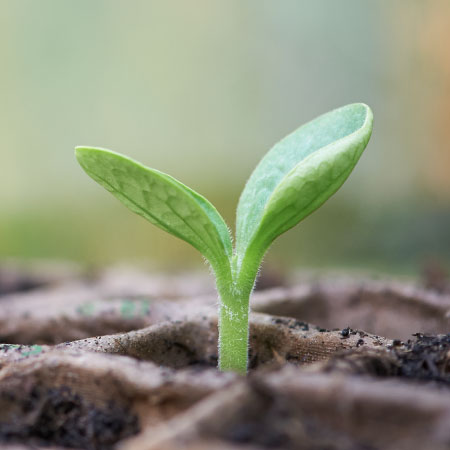
Ask any serious gardener what his or her secret is, and I'm sure that 99% of the time, the answer will be compost. For an organic garden, compost is critical to success. So where do you get compost? You can purchase it through your local garden center, or you can set up your own compost bin and make it yourself for little or no cost at all. Let's learn more about making and using compost in your garden. Compost is nothing more than decayed organic matter. This matter can be:
- leaves
- grass clippings
- yard trimmings
- most household waste - such as vegetable peelings, eggshells, and coffee grounds
An empty coffee or plastic pail kept in your kitchen can be used to collect the kitchen waste to be dumped into your compost bin or garden compost pile.
Compost Bin Plans
An outdoor compost bin can be as simple as just choosing an unused corner of your yard to pile inside and outside waste. Yet to get really serious, most people use an actual bin to build their compost. Bins can be purchased online or at your local garden center, or you can build your own.
Woven wire bins
The simplest compost bin is made with a length of woven wire formed into a circle. The length of woven wire should be no less than nine feet (2.7 m.) and can be larger if you choose. Once you have it formed into a circle, it is ready to use. Simply place your bin in an out of the way, yet easy to get to, place and begin using.
Fifty-five gallon barrel bins
The second type of compost bin is made with a fifty-five gallon (208 L.) barrel. Using a drill, space holes around the perimeter, starting at the bottom of the barrel and work upward for approximately 18 inches (45.7 cm.). This method will allow your garden compost pile to breathe.
Wooden pallet bins
The third type of homemade compost bins is made with used wooden pallets. These pallets can be acquired from local businesses for very little money or even for free. You will need 12 pallets for a complete working bin. You also will need more room for this type of bin, as it is actually three bins in one. You will need a number of screws and minimally six hinges and three hook and eye closures. You begin by attaching three of the pallets together into a square form leaving the front pallet for later. To that 'u' shape, add another pallet to the rear and the right side. Repeat again by adding to the second 'u' shape. You should now have three formed bins. Attach to each opening one more pallet using two hinges and attaching a hook and eye so the door of the squares open and close securely. Begin using this system by filling the first bin. When it becomes full, open the door and shovel the cooking compost into the second bin. Repeat when full again, shoveling the second into the third and so on. This type of bin process is the quickest way to make good compost as you are regularly turning the matter and, thus, hastening the cooking time.
How to Make Compost for the Garden
Making and using compost in your garden is easy. No matter which compost bin plans you choose, the basic operation is the same. Begin by putting a three- to five-inch (7.6 to 12.7 cm.) layer of organic matter, such as leaves or grass clippings, into the bin. Next, add kitchen waste. Continue to fill your bin until full. Good compost takes approximately a year to cook and turn into what farmers refer to as "black gold." Depending on the size of your garden, you may need to build more than one bin for your garden compost pile, especially if you choose the barrel method. For the woven wire bin, once it is full and cooking on its own, the wire can be lifted and moved to begin another bin. The pallet bin is generally large enough to make more than enough compost for a good sized garden. Whichever you choose, and if you start now, by next season's garden time, you should have plenty of wonderful compost for your organic garden success. Compost gardening is just that easy!
Sign up for the Gardening Know How newsletter today and receive a free copy of our e-book "How to Grow Delicious Tomatoes".

Kat Yares is a writer for Gardening Know How, specializing in organic gardening techniques.
